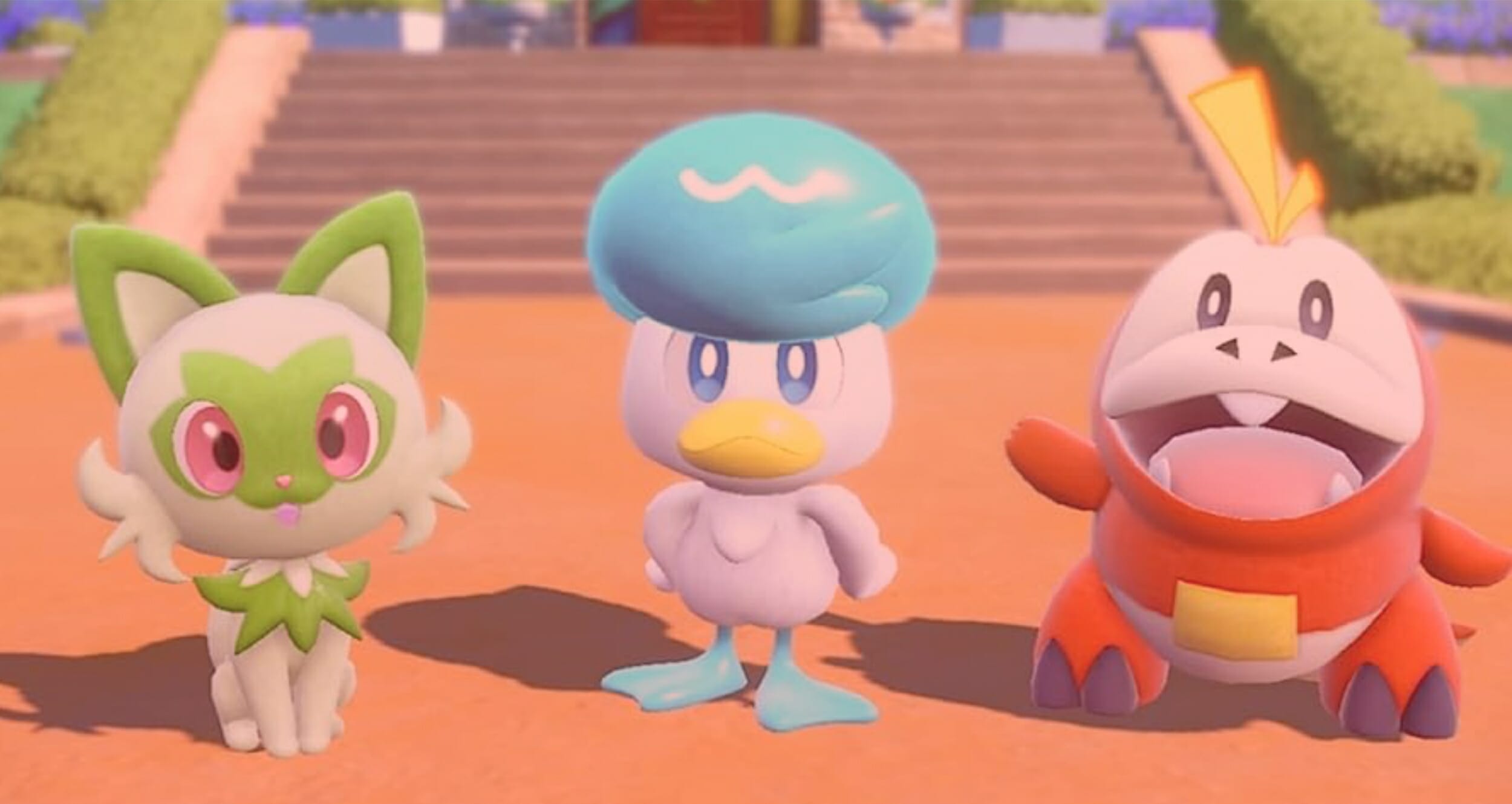Pokémon Scarlet and Violet are the latest entries in the long-running Pokémon series, and they promise to deliver a new evolutionary step for the mainline franchise. With an open world to explore, new Pokémon to discover, and three different storylines to follow, these games seem to have everything a Pokémon fan could ask for. They have also clearly taken many lessons from the rather good, Pokémon Legends: Arceus. So do these new games live up to the hype, or are they too ambitious for their own good?
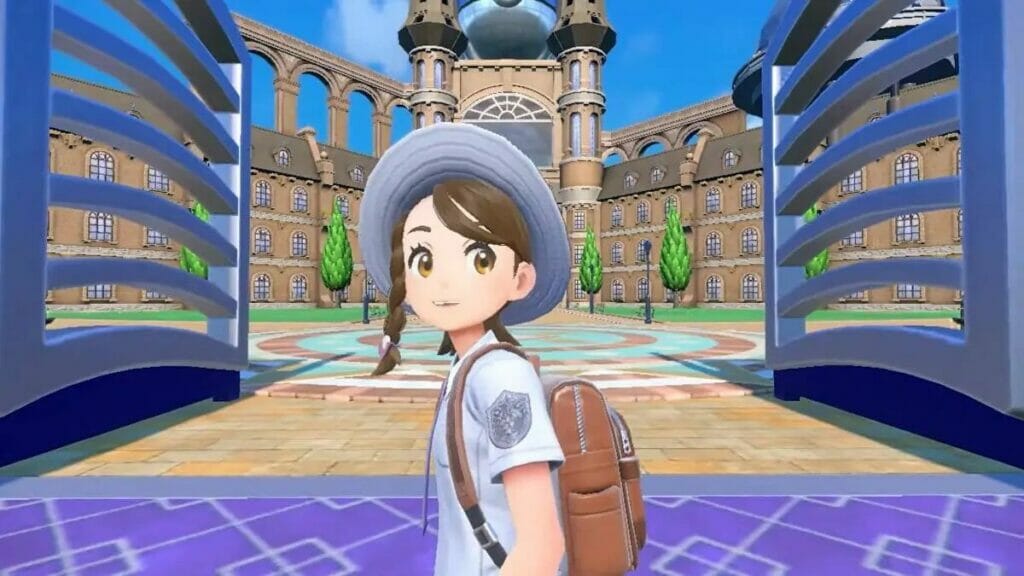
Pokémon Scarlet and Violet are set in the Paldea region, a diverse land inspired by the Iberian Peninsula (think South Western Europe). Gamers take on the role of a student attending Uva (Voilet) or Naranja (Scarlet) Academy, a prestigious school teaching people how to become Pokémon trainers and researchers. After completing the tutorial, players are free to roam the region and pursue their own goals. Much like traditional games in the series, gamers have the option of challenging the eight Gym Leaders before tackling the Elite Four, and eventually the champion of Paldea.
This time around, however, there is also the option of joining one of three factions, each of which have differing views on Pokémon and society. Of course, there is always the option of simply exploring the world at large, catching as many Pokémon as possible and forgoing the narrative; but gamers will always eventually need to continue the story to make any real progress (gym badges remain tied to controlling Pokémon at higher levels).
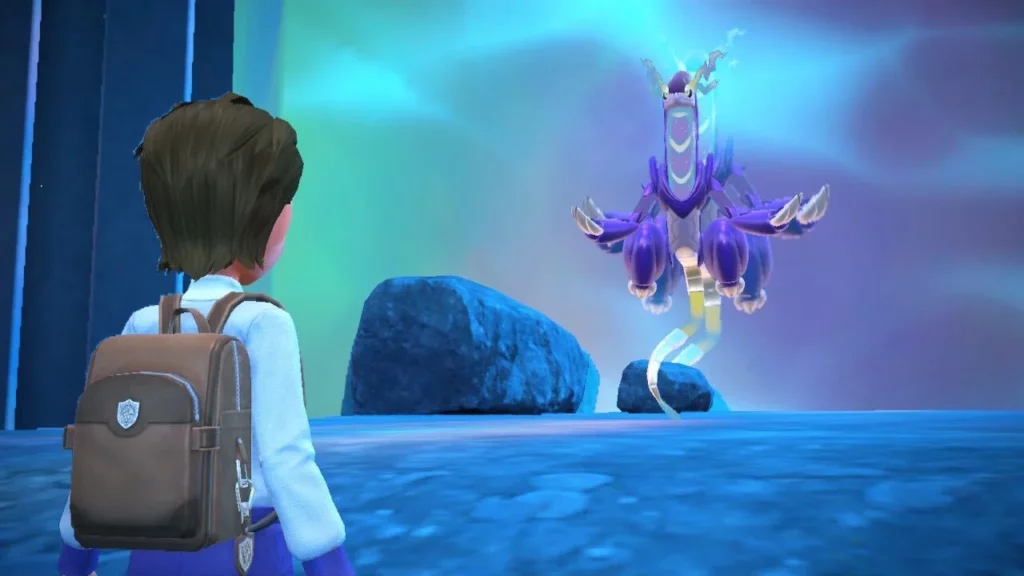
In terms of the story, there is a single overarching tale focussed around the Pokémon Miraidon (Violet) or Koraidon (Scarlet). However, the narrative is then split into three unique and distinct paths, namely Victory Road, Starfall Street, and Path of Legends. Players are given the option of determining the order in which to tackle each faction and battle their relevant teams – Team Star (a group of celebrities who want to use Pokémon for fame and fortune), Team Zero (a group of rebels who want to free Pokémon from human oppression), and Team Harmony (a group of pacifists who want to coexist with Pokémon peacefully).
Each path allows gamers to experience different events, characters, and outcomes, and better understand the motives and opinions of each faction. Despite feeling as if each path is inherently different, they all eventually culminate into a single experience merging to once again form part of the overarching main narrative. This adds a decent amount of value and complexity to the overall story, resulting in some tender and memorable moments along the way. The change of allowing gamers to partake in the story at their own pace, and of their own choosing, is a welcome addition to the franchise; and is a concept that will, no doubt, be fleshed out further in future games in the series.
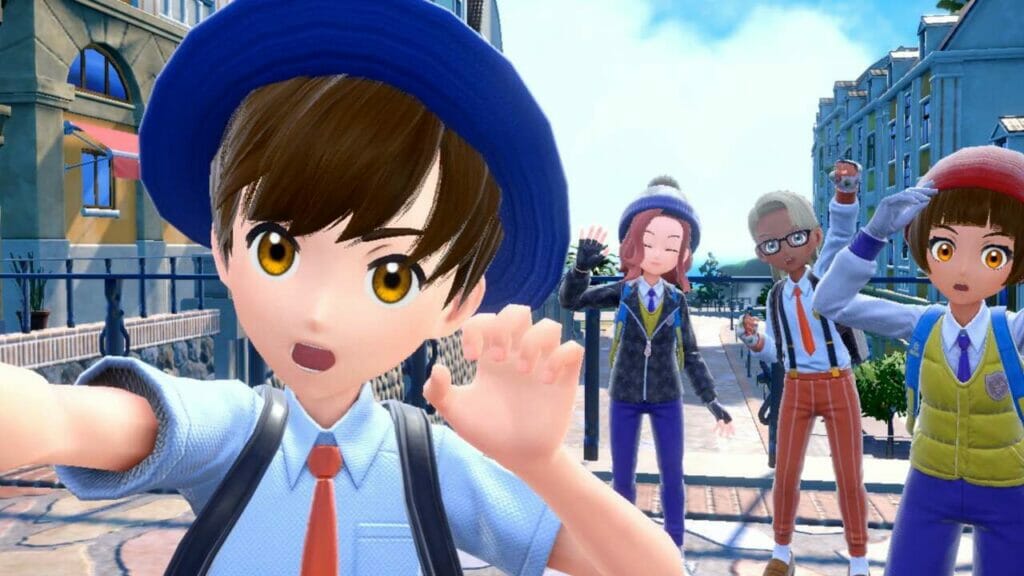
The concept of ‘choose your own adventure’ absolutely appears to be a core tenet of Pokémon Scarlet and Violet. In addition to influencing the story and interwoven narratives, the game also gives players an immense amount of choice on how to tackle the game. As such, the most breakout feature of these games is the open world design, allowing players to go anywhere they want – even from the start. This departure was first seen in Pokémon Legends: Arceus and has been enhanced further in Pokémon Scarlet and Violet.
Gone are the days of following a singular and linear path to battling level-scaled enemies. This time around players are given free rein and the option to choose their own difficulty and pace. Consequences of this change relate to how players can encounter high-level trainers and Pokémon in very early areas, or breeze through low-level ones in late-game zones. Ultimately making the new games more challenging and rewarding than earlier entries in the franchise.
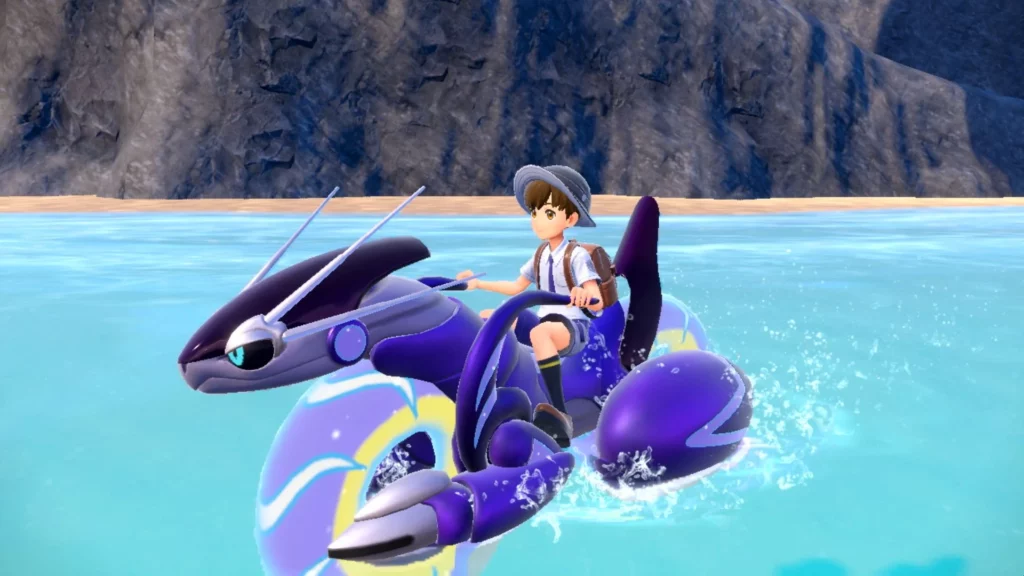
The open world also offers a lot of variety and secrets to discover in Pokémon Scarlet and Violet. A point made even more impressive given how there are over 400 Pokémon available in these games, including new ones unique to Paldea. Some of them are based on Spanish and Portuguese wildlife or cultural references, with Lechonk (a pig-like Pokémon that can be roasted and eaten) being the best example of this trend. Others are based on all sorts of new and wonderful additions to the Pokémon universe, such as time displaced Paradox Pokémon and, for the first time, “convergent evolution” Pokémon, which are species bearing similarities to other species – Wiglett is one such example (an eel-like Pokémon pretending to be a Diglett). The new Pokémon designs are mostly clever and fun, but some of them are also somewhat controversial; leading more into the realm of ‘Digimon’ than traditional Pokémon.
There is also an all new ‘Terastal phenomenon’ in the game, allowing Pokémon to transform into unique “Tera Type” forms (think Swarovski + Pokémon). However, these changes also modify the overall type of Pokémon who “terastallise”. These are often randomly assorted to Pokémon and can result in some interesting, if not game changing, changes to certain Pokémon. Imagine, for example, a Pikachu that can terastallise into the water type – making the cutesy rodent immediately usable in situations where it may have been a weakness. Although not an infallible new addition, it certainly makes a difference when considering battle strategy.
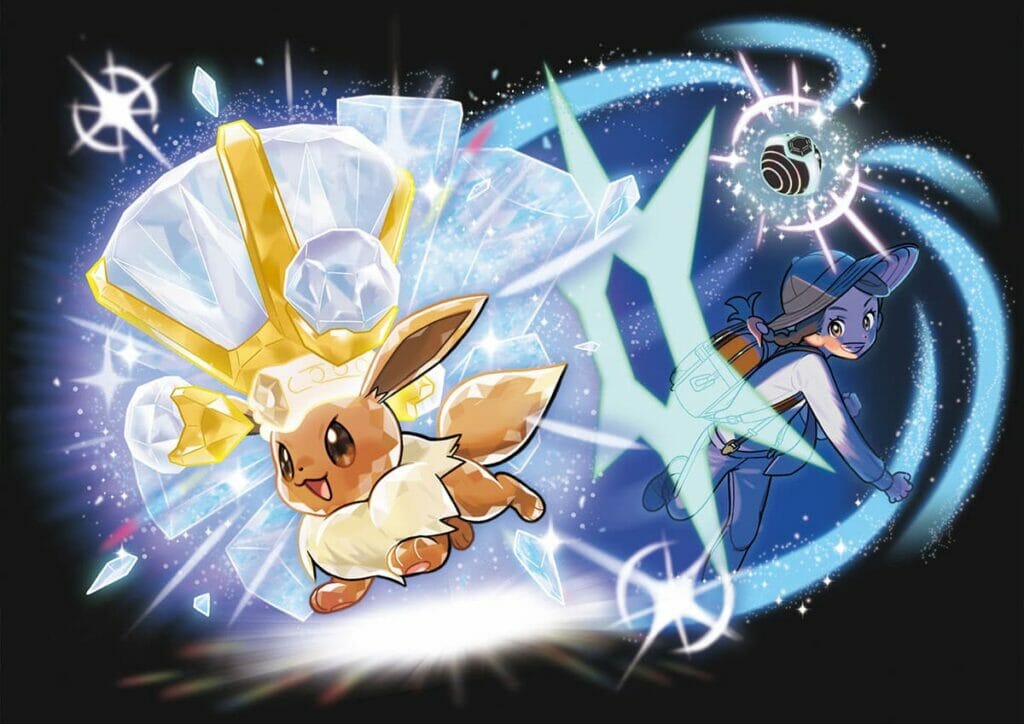
Another feature setting Pokémon Scarlet and Violet apart from previous entries is the “Let’s Go” auto-battle system, which allows players to let their Pokémon fight on their own without user input. This feature is optional, but it can be a useful time saving and multitasking tool. The auto-battle system is also somewhat smart enough to adapt to different situations and opponents, often using the best moves and strategies for each scenario. However, it is not perfect and can also backfire if one relies on it too much without taking note of how the system is performing. In the end, it is often far more satisfying to take control of battles versus letting the artificial intelligence (AI) handle it (a bit of an ironic statement given the narrative, but no spoilers here).
Perhaps one of the more unique new elements to these games is the co-operative multiplayer. Up to three friends can join a game session, adding a wonderful new social element to what has, generally, been a solo and offline experience for the franchise. At present, only the host retains any progress made during story elements. Battling and other experience rewarding events, however, are instanced for each player; making exploring the world of Paldea and catching Pokémon together with friends, a viable and fun element of the game. Well, only when it works.
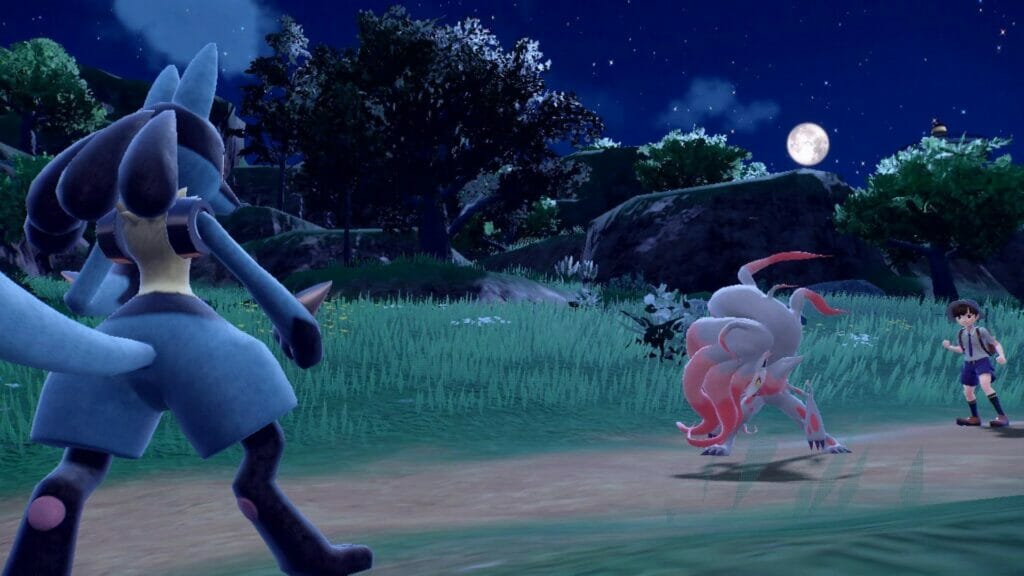
Despite a lot of great additions to these titles, Pokémon Scarlet and Violet are truly let down by some terrible technical performance on the Nintendo Switch. The games suffer from frequent frame drops, pop-in issues, glitches, crashes, and long loading times. Graphics are also inconsistent, ranging from beautiful landscapes and animations to utterly bland textures and models. Although the sound design is passable, with some nice use of music throughout the title, it does leave a lot to be desired – with the world feeling lifeless for the most part. Most of these issues make the games feel unfinished and unpolished, which is disappointing for such a major release.
There is no denying how Pokémon Scarlet and Violet are ambitious games, with Game Freak clearly attempting to reinvent the Pokémon formula with new features and fresh ideas. Although the studio certainly succeeds in some aspects, such as the open world design, new Pokémon, and multiple intertwining storylines; they certainly fail in others, such as the technical performance, graphical fidelity, and subpar sound design. As such, Pokémon Scarlet and Violet are enjoyable games for newcomers and Pokémon fans alike, featuring a lot of potential and equal amounts of disappointment.
Verdict:
GOOD
| PROS | CONS |
| Great for newcomers to the series | Poor performance |
| Wonderful open world | Game breaking bugs |
| Multiple interesting storylines |
Title reviewed on Nintendo Switch with code supplied by Nintendo.
Review Methodology | Ethics Policy
Owner, founder and editor-in-chief at Vamers, Hans has a vested interest in geek culture and the interactive entertainment industry. With a Masters degree in Communications and Ludology, he is well read and versed in matters relating to video games and communication media, among many other topics of interest.

